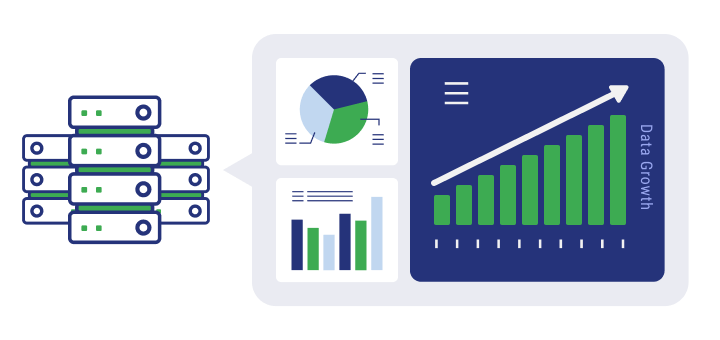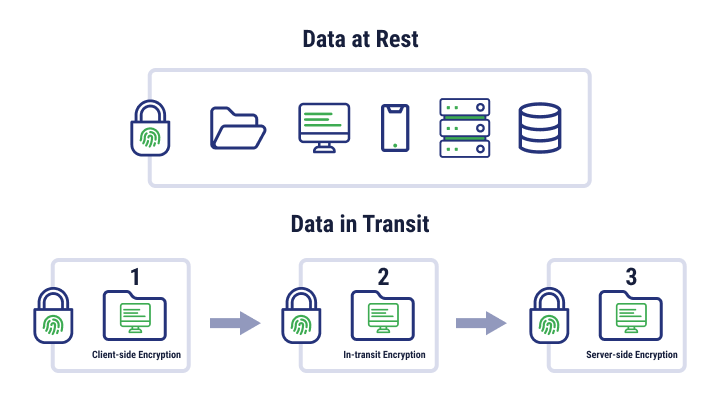
Organizations looking to protect their revenue, maintain business operations, and preserve their reputation rely on strong data continuity. Unforeseen disruptions, from natural disasters to cyberattacks, can create severe consequences for businesses that may be irreversible. By implementing best practices to maximize data continuity, organizations can strengthen their resilience and safeguard data, one of their greatest assets.
The Impact of Data Disruptions
Data disruptions can have far-reaching consequences for businesses, including financial losses from downtime, reputational damage from data breaches, and loss of productivity and operational efficiency from poor availability. These often present as cascading problems. Companies experience downtime, leading to lost productivity and shaken confidence in the stability of the organization. Reputational damages from this decreased trust lead to greater losses in revenue.
According to Pingdom, the average cost of downtime for a business can range anywhere from $427 to $9,000 per minute. Certain industries experience much higher losses than others, including retail, health care, and telecommunications. For some organizations, just a few minutes of downtime can be disastrous.
What is Data Continuity?
Data continuity describes data availability, including its accuracy, consistency across systems, accessibility, and ability to be recovered. By focusing on data continuity, businesses can improve their ability to make timely decisions, boost the efficiency of their operations, and mitigate risks that stem from data loss and downtime. Some industries even have regulatory requirements around data continuity.
Common Threats to Data Continuity
Many different disruptions can threaten data continuity, including:
- Hardware failures: Servers, network equipment, and storage devices can malfunction and cause data inaccessibility or complete losses
- Natural disasters: Fires, floods, earthquakes, hurricanes, and tornadoes can all render data centers unusable if companies have failed to create redundancy via secondary, geographically distinct data storage option
- Power outages: Power disruptions via outages can corrupt data, interrupt operations, or lead to incomplete saves
- Cyberattacks: Data can be encrypted, destroyed, or stolen via ransomware, malware, and other hacking attempts.
- Human error: Accidental deletion, loss of data, and modification can happen simply due to employee mistakes.
Challenges in Maintaining Data Continuity
The growing pool of data, ever-present challenges to data quality, data silos, and insufficient data management tools can all create obstacles for businesses looking to maintain data continuity.
Rapid Data Growth
Exponential increases in data volume can make it challenging to manage effectively while optimizing performance. It’s estimated that the amount of data created, copied, consumed, and captured worldwide will reach 180 zettabytes by 2025, almost doubling compared to 97 zettabytes in 2022.

When data volume increases so rapidly, data management and continuity can become exceedingly complex. Backup and recovery times, system performance, and storage costs can increase alongside higher volumes.
Data Quality Issues
More data to manage can also mean organizations have more difficulty with maintaining data quality. When data is inconsistent, incomplete, or inaccurate, decisions that come from interpreting the data can cause operational inefficiencies or worse. Data needs to be monitored, cleaned, and validated on an ongoing basis to maximize data continuity.
Data Silos
When data is isolated and relegated to specific departments or teams, data silos can form. Instead of having a unified view of your data, different sections of your organization may have incomplete views. You also run the risk of having teams delete data that’s valuable to other parts of the business.
Insufficient Tools and Technology
Data continuity efforts can also be impeded if businesses don’t invest in data management tools. You can only effectively manage what you see, and a good tool will help you gain visibility over your environment and understand the metrics associated with data continuity, such as uptime, performance numbers, and more. Outdated tools and inefficient systems can be just as bad as not having any tools at all, exposing organizations to vulnerabilities.
Best Practices to Help Ensure Data Continuity
Planning ahead is key to ensuring continuity. Businesses should have a solid backup strategy, plans to regularly test their processes, and strong approaches to secure data.
Implement a Data Backup Strategy within Your Disaster Recovery Plan
Business continuity can’t be bolstered or guaranteed without a robust data backup strategy. Any good disaster recovery or business continuity plan should include a strategy for backing up your data. This can include saving data to multiple, geographically distinct locations, including onsite, offsite, and cloud-based storage options.
Regularly Test Your Backup and Recovery Procedures
Don’t just trust that your backups will work in times of need – test your systems. Organizations should test their backups in full at least annually. If there are any changes you’ve made to backup and recovery procedures, or your data volume increased significantly, test more frequently.
Employ Data Encryption for At-Rest and In-Transit Data
Data should be safe when it is stored in your systems (at rest) and when it is on the way to a new destination (in transit). Encryption ensures that data cannot be deciphered if it is intercepted by cybercriminals, decreasing the likelihood of data loss and data breaches.

Utilize Redundant Systems and Data Centers
Redundancies can markedly increase data continuity by providing additional fallbacks should primary systems fail. Redundant systems within a data center design can include extra servers and network components, as well as additional cabling, power sources, and cooling systems. The more redundancies you build in, the less likely it is that your data continuity will suffer.
Conduct Regular Security Audits and Vulnerability Assessments
In addition to regularly testing data backup and recovery measures, businesses should run routine security audits and vulnerability assessments to reduce the impact of new and growing threats. The more businesses know about potential threats, the better they can safeguard against them. Appoint someone on the team, or rely on outside experts, to set regular schedules for software patching, security audits, and staying up-to-date on the latest threats.
The Role of Cloud Services in Enhancing Data Continuity
While some data continuity measures involve making physical changes to your infrastructure, cloud services can also enhance continuity and provide greater reliability for internal teams and end-users. For example, cloud storage can be used with on-premises data storage for added redundancy. Cloud providers can create automatic backups that scale with your business, and allow for greater data accessibility that only requires an internet connection.
One great way you can incorporate cloud services into your data continuity planning is through Backup as a Service (BaaS). TierPoint’s BaaS is a cloud-based backup and disaster recovery solution that ensures data availability for all workloads across all environments.
Interested in learning more about how to continue running your business through uncertainty and disruption? Read our eBook today.

